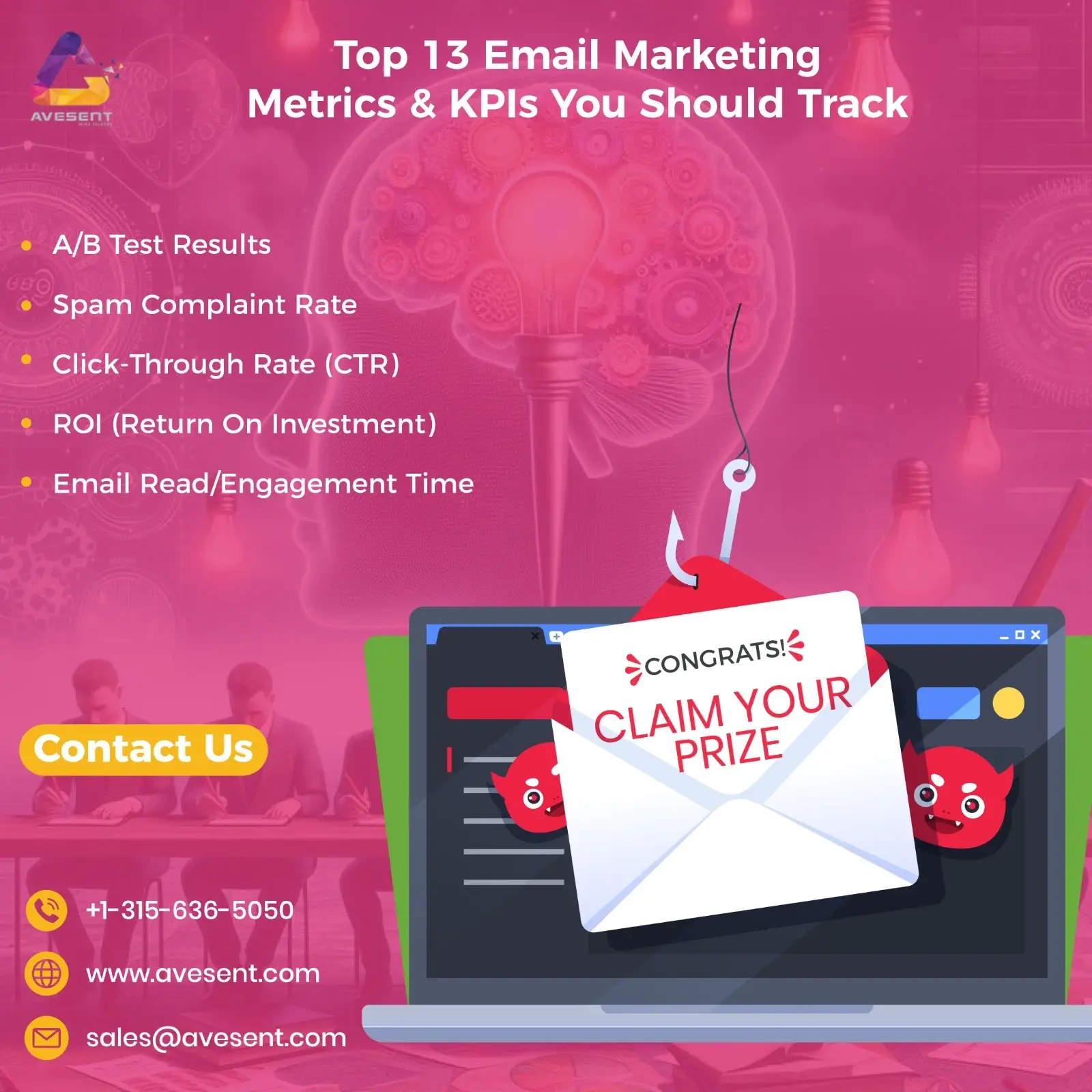In the digital world, email marketing remains one of the most powerful tools to engage your audience and boost conversions. But how do you know if your email campaigns are actually working? That’s where metrics and KPIs (Key Performance Indicators) come into play.
At Avesent, we help businesses track the right metrics to refine their email strategies, improve ROI, and deliver meaningful results. Here are the top 13 email marketing metrics and KPIs you should track for maximum success.
1. Open Rate
This is the percentage of recipients who open your email. It’s a strong indicator of how effective your subject line is and how interested your audience is in your content.
Why it matters: A low open rate means your subject lines might not be compelling enough or your list may need cleaning.
2. Click-Through Rate (CTR)
This shows how many people clicked on one or more links in your email.
Why it matters: It tells you if your content is engaging and your call-to-actions (CTAs) are effective.
3. Bounce Rate
Bounces occur when your email cannot be delivered. There are two types: soft bounce (temporary issues) and hard bounce (permanent issues like invalid addresses).
Why it matters: High bounce rates affect your sender reputation and email deliverability.
4. Conversion Rate
This tracks how many recipients completed a desired action like purchasing a product or signing up for a webinar.
Why it matters: It’s the ultimate measure of your campaign’s success in achieving business goals.
5. Unsubscribe Rate
This shows how many recipients chose to stop receiving your emails.
Why it matters: A high unsubscribe rate indicates your content may not be relevant or you are emailing too frequently.
6. Spam Complaint Rate
This metric tracks how many people marked your email as spam.
Why it matters: Too many complaints can damage your sender reputation and result in blacklisting.
7. Forward/Share Rate
This tracks how many recipients forwarded your email or shared it on social media.
Why it matters: It indicates highly engaging content that’s worthy of sharing.
8. List Growth Rate
This measures how quickly your email list is growing, including new subscribers minus unsubscribes and complaints.
Why it matters: A healthy growth rate means your content and value proposition are attracting new leads.
9. ROI (Return on Investment)
ROI shows how much revenue your email campaign generates compared to the cost involved.
Why it matters: It’s a critical business metric that demonstrates the financial effectiveness of email marketing.
10. Delivery Rate
This measures the percentage of emails that successfully reach inboxes.
Why it matters: It helps assess your list quality and sender domain health.
11. Email Read/Engagement Time
This tracks how long users stay on your email, showing true engagement beyond opens and clicks.
Why it matters: Longer read times typically mean your content is valuable and interesting.
12. A/B Test Results
A/B testing compares two variations of an email to see which one performs better in terms of open rates, CTR, or conversions.
Why it matters: It allows you to fine-tune your campaigns based on data-driven insights.
13. Mobile Open Rate
With more users reading emails on their phones, this metric shows how many opens happen on mobile devices.
Why it matters: If mobile open rates are high, your design should be optimized for smaller screens.
Final Thoughts
Email marketing can drive exceptional results—if you track the right metrics. From improving open rates to maximizing ROI, each KPI offers valuable insights into how your campaigns perform and where they can improve.
At Avesent, we specialize in data-driven digital marketing. Whether you’re running campaigns in India or across the globe, our team helps you understand and improve your performance. Let us take your email strategy to the next level with proven techniques and measurable results.




